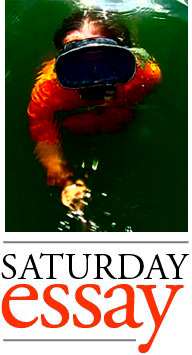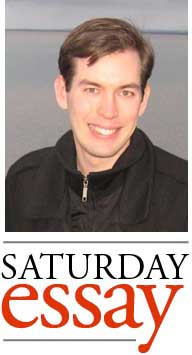Guts
 It started about five years ago with an ordinary stomach ache after eating late and poorly — a speedy meal en route from a client visit in Wisconsin with several coworkers. I felt like maybe I’d eaten something that disagreed with me, and thought really no more of it. Except, I kept getting sicker.
It started about five years ago with an ordinary stomach ache after eating late and poorly — a speedy meal en route from a client visit in Wisconsin with several coworkers. I felt like maybe I’d eaten something that disagreed with me, and thought really no more of it. Except, I kept getting sicker.
That night, I thought certainly I’d vomit, or at the very least I’d spend a not-inconsiderable portion of my evening in the bathroom. No such thing occurred, but the discomfort in my body continued. My gut felt raw and painful, as though I’d consumed many cups of coffee on an empty stomach, and my stomach filled with what I thought was gas, except it was in a really weird spot. Rather than the typical lower abdominal fluff of my lengthy experience with daily human digestion, this bloating was in my midsection, between my belly button and sternum. I felt like someone had filled me to painful expansion with air. It felt like something inside of me might tear or burst.
Over the next three weeks, it got slightly worse, and slightly better, depending on conditions I couldn’t plainly discern. I made an appointment with my general practitioner, an allopath I trust and respect. As I prepared to head to the appointment, I said to my husband, “This is crazy! I can’t believe I’ve been this sick for three weeks!” What a mouthful of macabre prescience: I would remain that sick or worse for the next two years.

















